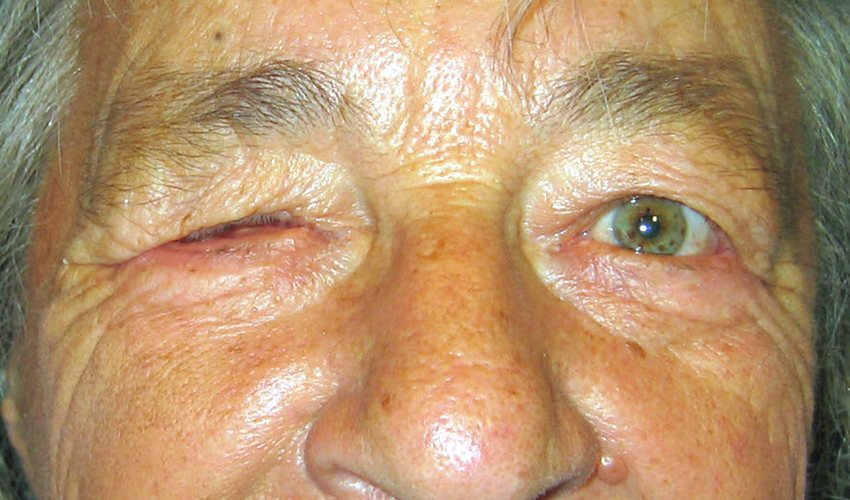Case study 6
Take home message:
For most women, the main downside to losing an eye is damage to their appearance – but for some, it’s not all that important. The loss of an eye seldom gets in the way of a successful life.
Don’t neglect your prosthesis – eye discharge is an unnecessary inconvenience.


Glossary of terms:
Giant papillary conjunctivitis : A condition most frequently associated with soft contact lenses. The papillae (about 1mm in diameter) occur under the upper lid and are thought to be an immunological response to
the deposits which build up on the prosthesis and act as allergens.
Atrophy : A wasting away of part of the body.
Background:
“When my husband Reese and I were fencing contractors, we moved around a lot and lived in tents on the properties we worked on. In 1974 we were clearing old fencing wire from a kiwifruit orchard. I cut a wire and one end sprang up and struck my right eye.” Mona Davies is an extraordinary woman who is a farmer (emphatically not just a ‘farmer’s wife’!). She has worked hard all her life and now lives comfortably on an 800 acre coastal farm just north of Whangarei, Northland. She and Reese run sheep and cattle as well as four beach front cottages which they rent out to fishing parties etc.
Their two children farm their own coastal blocks on either side of Mona’s and Reece’s land and not a day goes by when Mona does not see them or her 3 grand children. Mona took the loss of her eye like she does with most things in life, she “put up with it and moved on.” It wasn’t the damage to her appearance that concerned her so much as the difficulty she had parking the car and reading the ground hollows when going about the farm. Once, she got so fed up trying to park her car (albeit a large Mercedes Benz) she applied for, and was granted, a certificate which allowed her to park in disabled car parking spaces. Later however, Mona felt she wasn’t really disabled enough for the certificate and she let it lapse. Over the past few years Mona has had trouble with eye discharge. She was unaware that artificial eyes should be polished each year and again, she “put up with it and moved on.” In this case however, she could have saved herself considerable discomfort and inconvenience by attending Keith Pine’s clinic for routine annual checks and re-polishes.
Review of prosthesis and socket:
Mona presented in November 2008 with chronic discharge of her right eye socket and giant papillary conjunctivitis. Her prosthesis was 34 years old and as well as aggravating the socket, it was gazing outward and upward due to atrophy of the socket tissues over that time.
Treatment:
The existing prosthesis was polished. This immediately relieved most of the discharge problem and the giant papillary conjunctivitis settled down over the next few days while a new artificial eye was being made. The new prosthesis addressed the direction of gaze and provided more fullness and support to the upper lid. Mona was advised to remove and clean her prosthesis every month or so. She will be recalled for a check and re-polish in
twelve months time. Her new eye was fully funded by ACC.
Good luck Mona. You are an inspiration to all woman to just get out there and get on with it.
